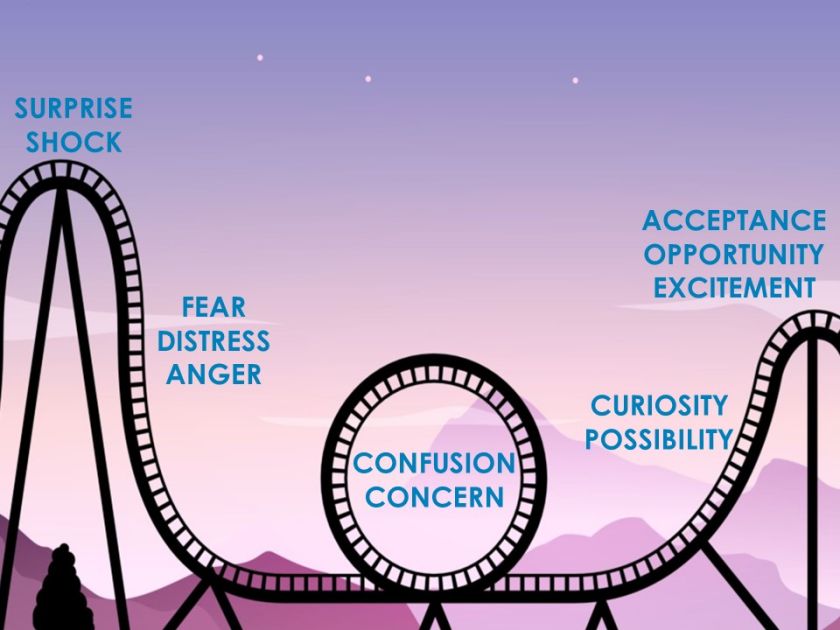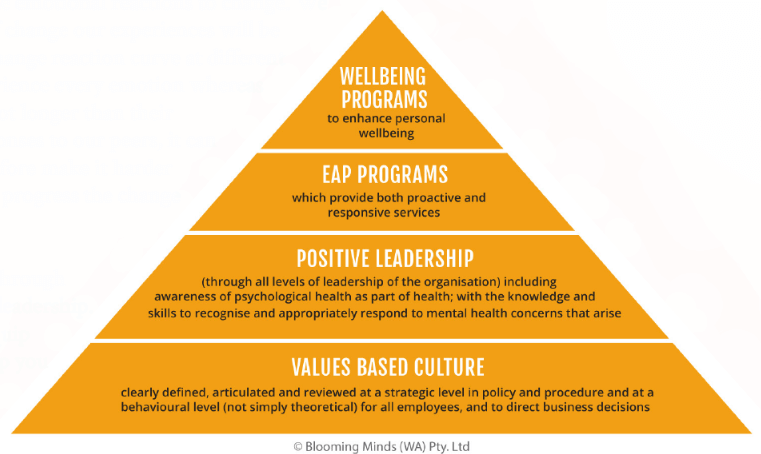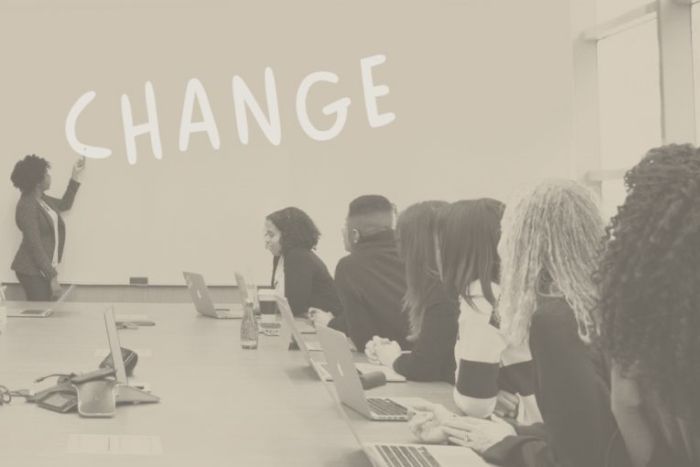During times of change, leaders can fall into the trap of simply communicating the WHAT is happening and WHEN it is happening of organisational change processes.
This pragmatic approach often fails to recognise the humans (the WHO) involved in the process of change. When this happens, it can lead to employees feeling either disconnected from, or possibly disruptive to, the process.
Leading Positively Through Change
Positive leadership requires both acceptance and understanding of emotional needs during change, as well as the strategies to support these. Positive leadership focuses on the WHO – the people – involved in change processes, maximising their engagement, and benefiting from their involvement.
How Can Leaders Achieve This?
There are 5 key elements to focus on:
- Values
- Model of Responses to Change
- Strategies to Manage Stress
- Positive Mental Wellbeing
- Effective Relationships and Supports
1. Values
Values-based leadership is not only important during times of organisational change, it is important ongoing in creating positive workplace cultures. That said, during times of change, leaders should aim to articulate the rationale, the decision-making process and the determined actions, based on the organisation’s values.
This requires that leaders themselves can first articulate what the values are, identify behaviours which are aligned with those values and celebrate when they observe these in action. They should also be able to identify non-aligned behaviours and engage curiously when they notice these.
2. Model Of Responses To Change

The above image outlines possible emotional reactions to change. As leaders we often try to respond to these emotional reactions with rational strategies – we throw more information at people, we withhold information because we think they can’t handle it, we try to rationalise to people who are having an emotional response and this can simply increase negative emotions and detachment.
We need to understand that through times of change, our experiences will be different – we will progress through our individual reactions to change at different paces, some individuals will not experience every emotion; some sticking with one response for a lot longer than others.
When we have different responses to our peers, it can increase our sense of disconnection and therefore make it harder for people to work collaboratively and to progress the change initiatives.
An important element of leading others through change is having self-awareness and self-leadership. Pause and consider what emotions you’re feeling at the moment and connect with any resources or supports to help you to transition (if required).

3. Strategies to Manage Stress
In her famous TED talk on stress, psychologist Kelly McGonigal argues that rather than trying to calm down your pounding heart when stressed, you instead view the stress reaction as your body getting ready for the challenge; giving you the energy to deal with the issues. Your pounding heart is preparing you for action and faster breathing is getting more oxygen to your brain so that you can think more clearly. She determines that how you think about stress matters.
A Harvard University study was conducted which asked one group of participants to rethink their bodies’ response to stress. The group who positively reframed their stress responses experienced far fewer negative effects from stressful situations than the control group.
We recognise that for many uncertainty and change can elicit stress responses. However, we can use the opportunity to demonstrate and encourage people to positively engage with proactive stress management strategies so that they are able to take positive actions rather than feel overwhelmed.
There are many different stress management models. The key is to find positive, helpful strategies and to use them proactively. If an employee is experiencing a high stress response which is distressing to them, or that is impacting on their functioning or wellbeing, then recommend that they seek specific individual support from your EAP provider.
4. Positive Mental Wellbeing
Building positive mental wellbeing proactively can help sustain us through periods of distress and uncertainty. There are many ways to do this.
Shawn Anchor conducted a program with KPMG employees in the lead up to tax time. The employees were instructed to choose one of five activities designed to improve positive personal mental wellbeing:
- Jot down three things they were grateful for;
- Write a positive message to someone in their social support network;
- Meditate at their desk for two minutes;
- Exercise for 10 minutes; or
- Take two minutes to describe in a journal the most meaningful experience of the past 24 hours.
The participants chose an activity to do each day for three weeks. The participants and a control group, who had not done the daily activities, were then assessed several days after the training concluded to evaluate their general sense of well-being, their level of engagement and if they were depressed.
The experimental group results demonstrated significantly more improvement on all scores than the control group, and this difference was maintained when both groups were tested again four months later.
Shawn Achor concluded in the research that happiness had become habitual. Helping your employees to access resilience and positive wellbeing skills can be a fundamental step in helping them to manage their mental wellbeing proactively.
Could you introduce a program to help your employees build positive psychological wellbeing?
5. Effective Relationships and Supports
Positive relationships between colleagues can assist with morale and can equip employees better during periods of stress and change. Achor, Ben-Shahar and Stone identify social support as the primary predictor of happiness during high stress. Their research suggests that while the support a person receives is important, the support they give is an even more important factor in sustained engagement and happiness.
- How can you increase supports and model this for others?
- How can you increase supports for each other and increase the sense of belonging and connectedness within your team, and to the broader organisation?
References
L. Leahy & N. Chamberlain, “Surviving Change”, Strategic HR Review, Vol 7, No. 6, 2008
Deci, E. L., “Effects of Externally Mediated Rewards on Intrinsic Motivation”, Journal of Personality and Social Psychology, 18; 1971
“Positive Intelligence”, S. Achor, https://hbr.org/2012/01/positive-intelligence
K. McGonigal, TED talk, https://www.ted.com/talks/kelly_mcgonigal_how_to_make_stress_your_friend
-
 Leading Positively through Change | eLearning Course$198.00 inc.GST
Leading Positively through Change | eLearning Course$198.00 inc.GST -
 Building Buoyancy | eLearning Course*$180.00 inc.GST
Building Buoyancy | eLearning Course*$180.00 inc.GST -
 Workplace Mental Health for Leaders | eLearning Course + Assessments$770.00 inc.GST
Workplace Mental Health for Leaders | eLearning Course + Assessments$770.00 inc.GST
Tap into our mental health expertise
Image: Christina Morillo (Unsplash)



